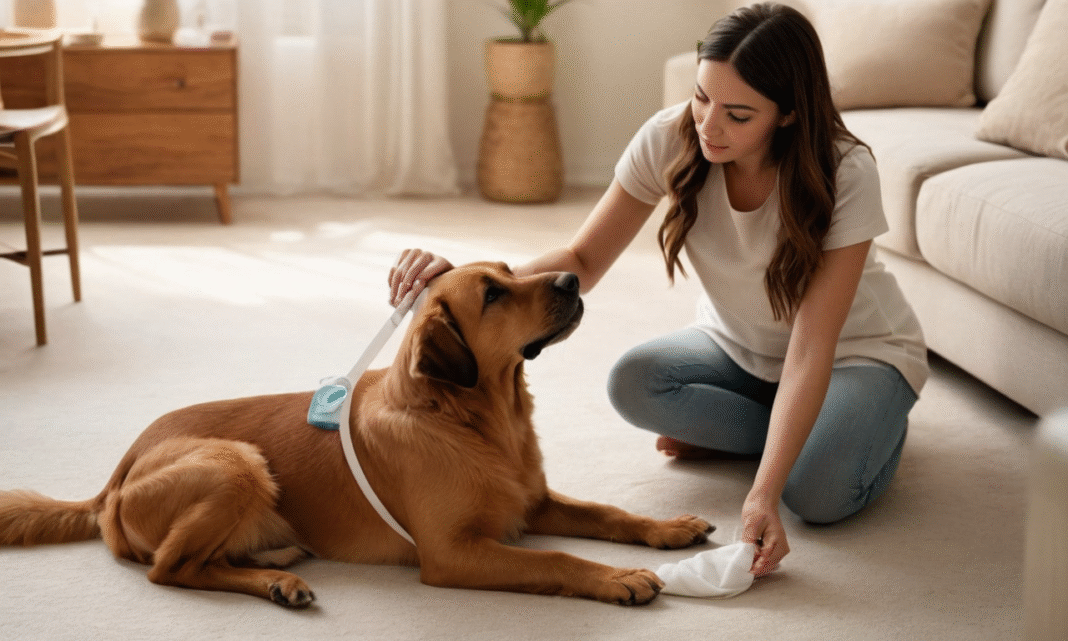As a pet owner, you want the best for your furry friends. Part of that responsibility includes being prepared for emergencies. Understanding pet first aid basics is essential for keeping your pets safe and healthy. This guide will help you navigate through common pet health issues, providing practical tips, and necessary actions you can take in critical situations.
Understanding Pet First Aid
Pet first aid is the immediate care provided to an injured or ill animal before professional veterinary treatment is available. Knowing these basics can save your pet’s life and ease their discomfort. Always keep a pet first aid kit handy, complete with key supplies like bandages, antiseptics, and calming agents.
Common Pet Health Emergencies
1. Cuts and Wounds
Causes: Pets can sustain cuts and wounds from various sources, including sharp objects, other animals, or accidents during play.
Symptoms: Look for signs of bleeding, excessive licking at the wound, or signs of pain such as whimpering or reluctance to move.
Diagnosis and Treatment:
-
- Diagnosis: Examine the wound to assess its depth and severity.
-
- Treatment: For minor cuts, clean the area with warm water and mild soap. Apply a sterile bandage if necessary. Keep an eye on the wound for signs of infection like redness or swelling. For deep cuts or persistent bleeding, seek veterinary care promptly.
2. Choking
Causes: Pets often choke on food, toys, or foreign objects.
Symptoms: Gagging, pawing at the mouth, difficulty breathing, or a change in color (e.g., tongue turning blue) can indicate choking.
Diagnosis and Treatment:
-
- Diagnosis: Observe your pet for the above symptoms.
-
- Treatment: If your pet is choking but can still breathe, encourage coughing. If they can’t breathe, perform the Heimlich maneuver for pets, using firm thrusts just below the rib cage. If that doesn’t work, seek veterinary assistance immediately.
3. Burns
Causes: Burns can occur from hot surfaces, chemicals, or scalding liquids.
Symptoms: Look for red, blistering skin, swelling, or signs of pain.
Diagnosis and Treatment:
-
- Diagnosis: Assess the severity based on the size of the burn and the area affected.
-
- Treatment: Rinse the burn with cool (not cold) water. Avoid using ice directly on the burn, as it can cause further damage. Cover it with a sterile dressing and consult your veterinarian for further care.
Recognizing Signs of Illness
Pets can exhibit various signs when they’re not feeling well. Understanding these early warning signals can be crucial in preventing more serious health issues.
Changes in Appetite
A sudden loss or increase in appetite can indicate underlying problems. Monitor your pet’s eating habits and consult a vet if changes persist.
Unusual Behavior
If your pet is lethargic, anxious, or displaying unusual aggression, it could signal health issues. Keep notes on their behavior to discuss with your vet.
Vomiting or Diarrhea
Occasional vomiting or diarrhea might not be cause for concern, but persistent symptoms are a red flag. Add extra fluids to their diet and track their recovery.
Creating a Pet First Aid Kit
Having an organized pet first aid kit can make all the difference in an emergency. Key items to include are:
-
- Gauze pads and bandages
-
- Antiseptic wipes
-
- Tweezers for removing splinters
-
- Digital thermometer
-
- Hydrogen peroxide for inducing vomiting (only use after consulting a vet)
-
- A muzzle to prevent biting during stressful situations
Regularly check and replace any expired items in your kit to ensure it’s always ready for emergencies.
Preventing Emergencies
While it’s impossible to prevent every accident or illness, there are steps you can take to reduce risks. Secure sharp objects and toxic substances out of reach. Regular vet check-ups can also help catch health issues early on.
Training and Supervision
Proper training can prevent many accidents. Teach commands like “leave it” or “drop it” to discourage your pet from eating harmful objects. Always supervise pets during playtime, especially with new toys or treats.
Understanding Pet CPR
Pet cardiopulmonary resuscitation (CPR) can be a lifesaver in emergencies. Here’s a brief overview:
-
- Check for Responsiveness: Tap or gently shake your pet.
-
- Ensure Airway is Clear: Check for breathing.
-
- Chest Compressions: Place your hands on the ribcage and compress firmly at a rate of 100-120 compressions per minute.
-
- Rescue Breaths: If your pet isn’t breathing, provide two breaths after every 30 compressions.
Always seek veterinary care immediately afterward, as these measures are temporary until professional help is obtained.
Final Thoughts
Being equipped with the knowledge of pet first aid can make a significant difference in your pet’s health and safety. Accidents can happen anytime, but your preparedness can ensure a quicker response. Keep yourself informed, keep your first aid kit stocked, and above all, love and protect your furry family members.





